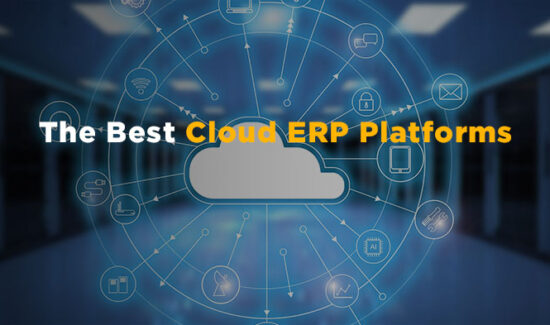3 Signs It’s Time to Upgrade Your Company’s General Accounting Software


As part of Solutions Review’s Contributed Content Series—a collection of articles written by industry thought leaders in maturing software categories—Sean Chatterjee, the Vice President of Partner Sales at Acumatica, outlines the signs that signify it’s time for a company to upgrade its general accounting software solution.
An accounting team is an essential facet of any company. Accounting teams rely on modern technologies—such as accounting software like QuickBooks—to manage an organization’s financial health and operate at scale effectively. Accounting software enables businesses to improve how they manage their accounting transactions, from accounts receivable (AR), accounts payable (AP), and bank management to revenue tracking and financial reporting.
A standalone accounting solution provides specific functionality and operates to streamline financial processes and benefit accounting teams. And the benefits are many. Accounting teams can eliminate manual data entry, improve reporting accuracy, automate and leverage built-in reports, simplify payroll and tax filing requirements, reduce labor costs, and access centrally stored data.
Many small to mid-sized organizations find that general accounting software systems like QuickBooks are straightforward and, most of all, affordable. However, general accounting software becomes too simple and inflexible as companies grow. Business decision-makers must know the critical tipping points that indicate it’s time to graduate from general accounting software to a robust business management system to maintain operational efficiency and scale with growth.
Tipping Point No. 1: Rapid Growth
Initially, startups and small businesses can get by with general accounting software—until their business moves to the next level. For example, with general accounting software, multiple locations require multiple databases, which is not conducive to a unified operating team expanding its number of physical locations or supporting a dispersed workforce.
As businesses grow in revenue, employees, customers, and office locations, they will need a more advanced business management system. These systems enable companies to manage multiple sites from a single database, which means employees can work anywhere without losing real-time visibility or access to company data. Additionally, businesses can use the software to automate manual and repeatable tasks, allowing them to gather, organize and analyze their data efficiently.
Widget not in any sidebars
Tipping Point No. 2: Siloed Data
As companies grow, basic accounting software struggles with disparate spreadsheets, disorganization, and hidden manual processes. Basic software doesn’t offer advanced features such as automated communication with customers, sophisticated reporting, or dashboards.
A cohesive business management system integrates multiple departments and applications to provide an end-to-end business management experience. While these systems offer functionalities like accounting software, they take that functionality to the next level. Businesses can use a comprehensive management system to access information across departments and third-party applications, which gives them a comprehensive and cohesive view of the business.
Tipping Point No. 3: Disconnected Lines of Business
General accounting software offers businesses a good starting package at an affordable price. However, it is primarily designed to handle basic accounting. Managing business processes outside of financials requires a more robust business management system, which can handle accounting and financial management needs and other business requirements, such as manufacturing, distribution, and much more.
A business in the manufacturing, distribution, or commerce industries, for example, deals with supply chain logistics, inventory tracking, warehouse management, and so on. Basic accounting software is not built to handle these complexities. Basic systems cannot integrate data across each line of business, which makes it difficult for decision-makers to have visibility into the status of each line of business. With the visibility afforded by a comprehensive business management system, organizations can make more informed decisions to increase efficiency and productivity and positively impact the company’s bottom line.
Upgrading to a Cohesive Business Management System
After assessing these signs, businesses and their accounting teams can determine whether it’s time to upgrade to a comprehensive business management tool or stay with accounting software that does its job but little else. They should also investigate similar use cases.
Businesses that adopt a comprehensive business management system experience significant ROI. According to a Forrester study, companies that implemented a more extensive management system saw a 15-percent increase in gross margins, a 15-percent increase in sales volume, and a 45-percent increase in employee productivity. In addition, the study determined that organizations would see benefits of $3.5 million over three years versus costs of $2.1 million, which would result in a net gain of $1.4 million and an ROI of 66-percent. The solution had a 16-month payback period.
Suppose decision-makers agree that a more robust accounting and management system would benefit their business. In that case, the next step is to identify the best solution for them and their unique needs. There are plenty of solutions in the market. Evaluating the various accounting management options carefully will go a long way toward selecting the right software, ensuring a successful implementation, and achieving swift ROI.
As companies grow, the path to success changes. Financial teams are critical in helping their company succeed and leverage the tools they need to support business growth. With a more extensive business management plan in place, companies will have the flexibility to grow, access real-time data across departments, and connect lines of business to ensure future success.

























